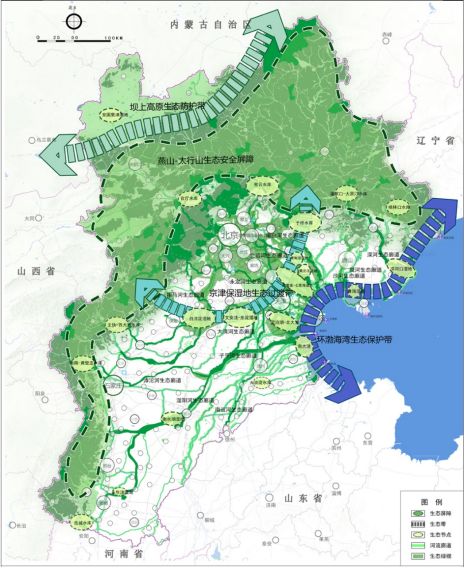Brief Introduction to Urban-Rural Planning of Beijing-Tianjin-Hebei Urban Agglomeration, 2016-2030


Project classification:
Regional Planning
Person in charge:
Du Baodong
I. Location of Project
Beijing, Tianjin, Hebei Province
II. Objective of Planning
Bearing in mind the goal of "building a world-class urban agglomeration centering on the capital", we focused on building a modern urban system and a new urban-rural relationship, put forward the goals of relieving Beijing of functions nonessential to its role as the capital and the construction of the world-class urban agglomeration of Beijing-Tianjin-Hebei in 2020 and 2030 in light of the comprehensive carrying capacity of resources and environment, and further clarified the indicator system for building the world-class urban agglomeration.
III. Main Content of Planning
First, determine the foundation of urban development based on comprehensive carrying capacity. After comprehensive analysis and comparison of various constraints of Beijing-Tianjin-Hebei region such as water resource conditions, ecological carrying capacity and environmental capacity, the project team proposed the optimal scheme.
Second, build a harmonious and livable urban-rural spatial system. The project team determined the overall pattern of cities and towns, strictly controlled the scale of megacities, focused on boosting the development of large cities, and made active efforts to foster medium-sized cities and a number of specialized small cities. Characteristic rural areas were formed by such measures as building diversified small towns with distinctive flavors, promoting the construction of beautiful villages, and building modern villages in the vicinity of large cities. Support the development of urban agglomerations through infrastructure construction in ecology, transportation, industry, culture, public services and municipal administration.
Third, push ahead with relieving Beijing of functions nonessential to its role as the capital, and promote the construction of the places taking over those nonessential functions and Beijing Municipal Administrative Center. Guided by the plan of nonessential functions relief and site-selection principle, the project team laid down the planning, construction and management requirements for the place taking over the nonessential functions and Beijing Municipal Administrative Center, stressing ecological and green characteristics.
Fourth, establish a regional space control and safeguard mechanism. The project team innovated the urban-rural planning and management mechanism for BTH coordinated development, focusing on strengthening the states spatial control over construction-prohibited and construction-restricted zones, areas with cross-regional conflicts, and policy-supported zones; formulated coordinated planning for cross-regional areas and related special plans; established and improved the boundary management system of urban development, set up planning implementation and supervision mechanism and planning dynamic monitoring and evaluation mechanism.
Fifth, lay down the spatial development guidelines and short-term plan of actions of the three places. The project team formulated a task list and negative list to guide the spatial development of the three places, stated clearly the entities responsible for formulation, implementation and supervision, and proposed key actions for the implementation of the annual plan.
